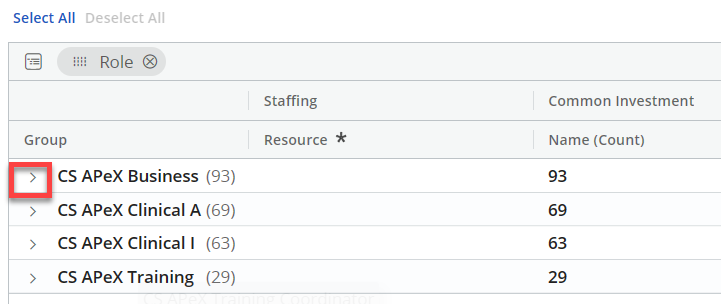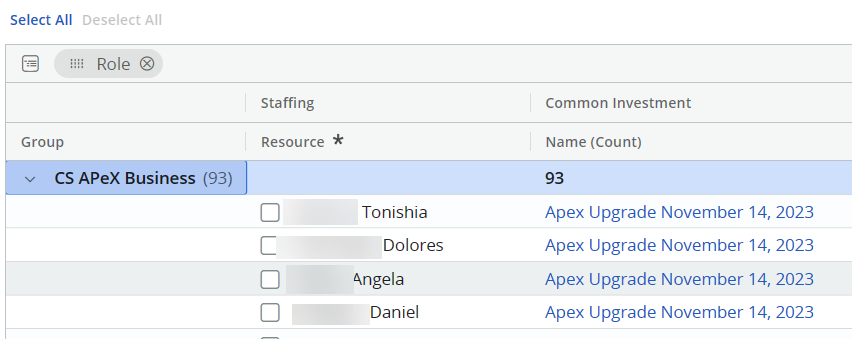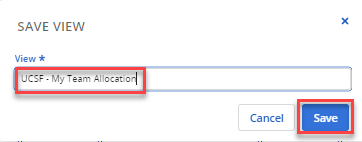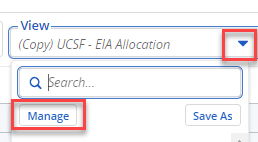This content is viewable by Everyone
MyPPM for Resource Managers: View Resource Allocations
- Audience: Staff, Technical Partner
- Service Category: Business Applications
- Owner Team: IT Project Management Office
-
Service:MyPPM
From the Home menu, click on Staffing on the left.
Click on the Staff tab.
For ease of use, a default view has been created which you can use to start building your own view of resource allocations and actuals.
Select the View called UCSF CS APeX Clinical Training.
The view has the following filters applied. Update the Primary Role (Resource) filter and add the roles for your team.
As part of this view, only Roles that are active will be displayed.
There are also two filter options which have been hard-coded onto this page.
Active (Common Investment) will default to Yes, so that you will automatically view only active investments. If you wish to see active and inactive investments, update this to All.
Template (Common Investment). will default to No, so that templates are not displayed in amongst your investment records. If you wish to view templates, set this to Yes.
Once the filter is applied, the data set displayed will show the name of the roles. Click on the arrow to the left of the name to expand out the detail.
Once the data set has been expanded, you will see the projects the role has been allocated to, as well as the resources who work in this role.
Scroll to the right to see monthly data for Allocation and Actuals.
If you wish to change the per-period metrics that are displayed, click on the Columns tab.
Scroll down to the Per-Period Metrics section and add/remove the checkmarks against those items you wish to adjust in your view.
Notes on Allocation, Actuals and Remaining Availability
Allocation: The allocation (in hours) for the resource on the project specified.
Actuals: The total hours entered into a resource's timesheet for the specified project. As timesheets cannot be submitted for future dates, this data will always be for time periods in the past.
Totals
This view will also show you columns for Grand Totals. The data can be displayed in two different ways.
Sum of Periods – will add up the total hours between the Start Period and End Period.
Grand Totals – will add up the total hours for the life of the project.
Type
Use the View Options button to further customize and update your views.
The Duration feature allows you to specify a start period and then a duration based on the start period.
In the example below, we have specified a Start Period of 'Prior Period', Number of Periods as 14 and Start Period Offset as -2.
Given the current month is December, the Start Period becomes November.
However, as we have set our offset as -2, the start period displayed will go back two further periods. Therefore, the data displayed will start from September.
From September, there will be 14 months worth of data displayed.
Setting up views in this way is particularly useful as it allows you to set rolling dates and allows greater flexibility in the way you view this data.
Saving Views
Once you have adjusted your filters, columns and view options, save your View by clicking on the downward arrow in the View drop down.
Select Save As.
Give your view a name and click Save.
You may also choose to share your view with other users. To do this click on the down arrow in the View drop-down and select Manage.
Hover your mouse over the row for the applicable view until the Share button appears. Click on Share.
You will then be able to select the button to share with Everyone. Then click on Done.
Your view will now be available to other system users.
















